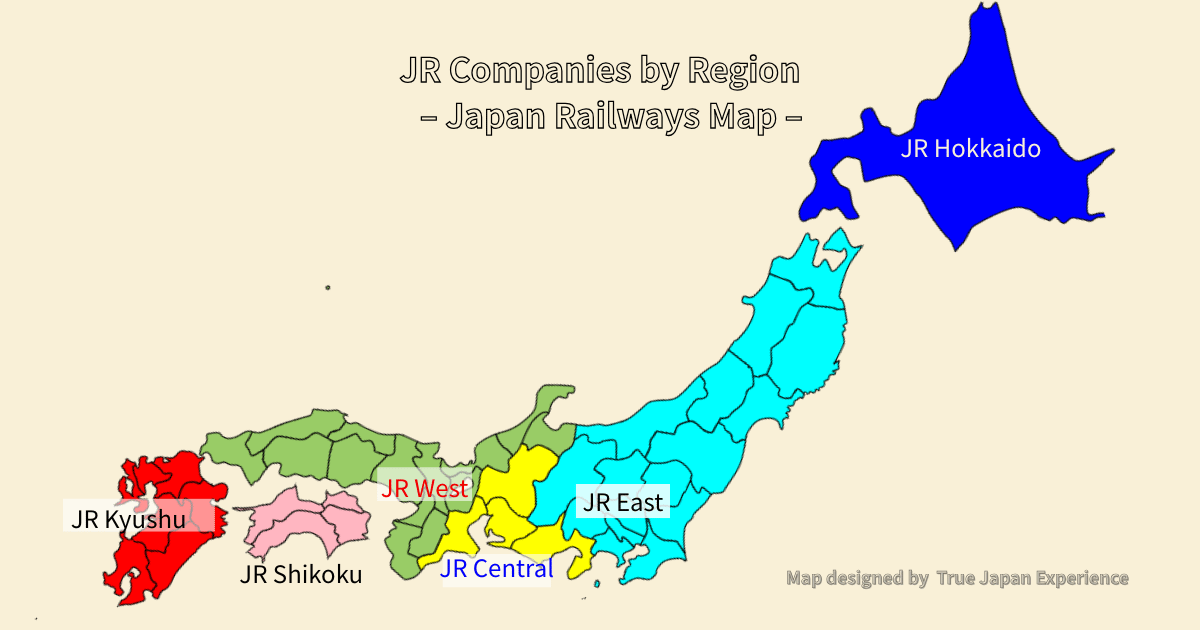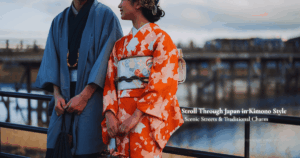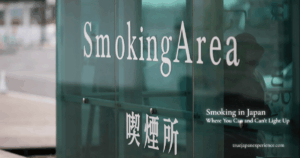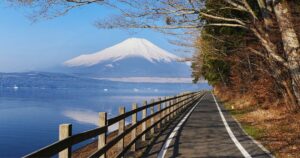A Regional Train Guide for Travelers
Planning a trip to Japan and feeling overwhelmed by the complex train system?
You’re not alone.
One of the most confusing parts for many travelers is figuring out which JR company operates in which part of Japan—especially when cities like Tokyo, Osaka, and Kyoto are each served by different regional JR groups.
From JR East to JR West (and more!), this guide will help you understand the basics of Japan’s regional train companies, so you can ride with confidence and choose the right rail pass for your journey.
Japan’s Train Companies by Region: JR Is Not Just One Company
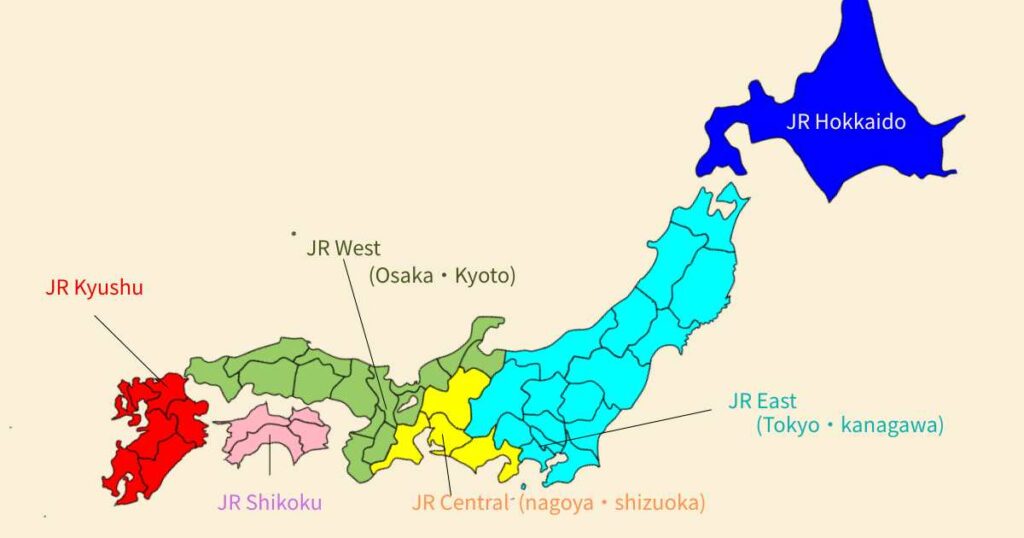
※JR companies are divided by region. This map shows which parts of Japan are served by each company and some key cities.
When most travelers hear “JR,” they think of one big national train company. But in reality, JR (Japan Railways Group) is divided into six regional companies, each operating in different parts of the country. This system was created after the government privatized the old national railways in 1987.
Here’s a quick breakdown of the major JR companies that tourists are most likely to encounter, listed from north to south:
Each company has its own ticketing system, service areas, and even its own regional passes. While trains may look similar across Japan, they are managed by different operators depending on where you travel.
JR East vs JR West: What’s the Difference and Which One Do You Need?
For most international travelers, the two JR companies you’ll interact with the most are JR East and JR West. These two giants cover Japan’s most popular tourist destinations—Tokyo and Kyoto/Osaka, respectively—but they operate separately and offer different services, rail passes, and even apps.
Here’s a simple comparison to help you understand the key differences:
| Feature | JR East | JR West |
|---|---|---|
| Main Areas | Tokyo, Tohoku, Nagano, Niigata | Kyoto, Osaka, Hiroshima, Okayama |
| IC Card | Suica | ICOCA |
| Rail Passes | JR East Pass (Tohoku, Nagano/Niigata) | JR West Kansai Pass, Hiroshima Pass, etc. |
| App | JR East App (Japan Travel) | JR West App (West Japan Railway App) |
| Shinkansen | Tohoku, Hokuriku, Joetsu lines | Sanyo, Hokuriku (shared), and part of Tokaido (via JR Central) |
If you’re starting your trip in Tokyo, you’ll mostly be using JR East lines, including the Yamanote Line that circles central Tokyo. If you’re exploring Kyoto, Osaka, or Hiroshima, you’ll likely be relying on JR West’s network.
Understanding this difference helps you choose the right rail pass and avoid confusion at ticket machines, which are often color-coded and branded by region.
Can I Use Suica or ICOCA in Tokyo, Osaka, and Kyoto?
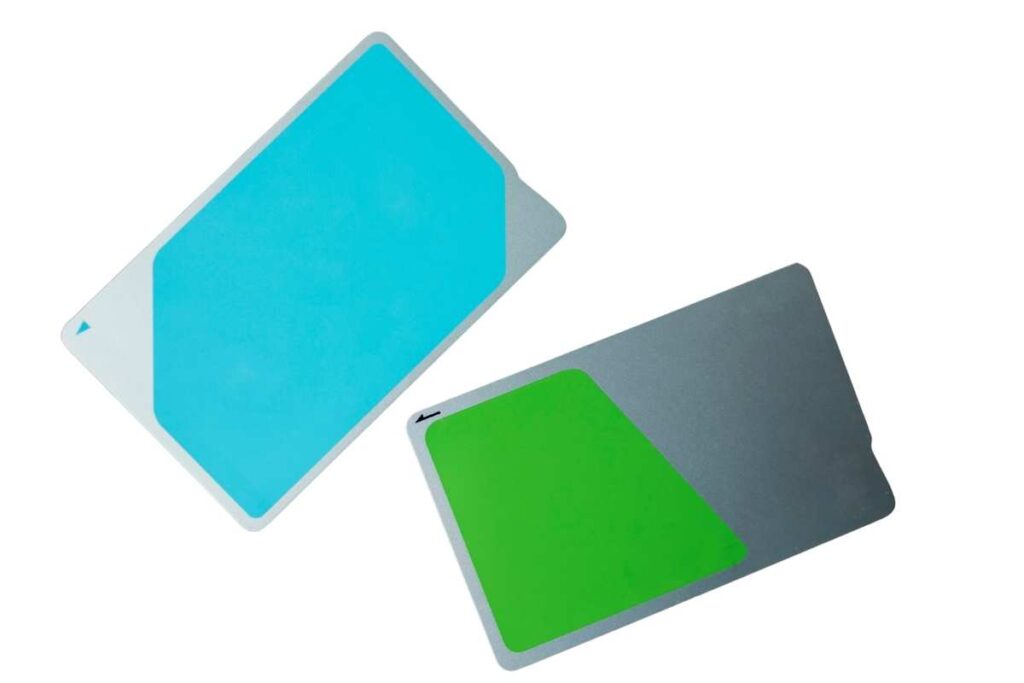
IC Cards by Region Explained
Yes, you can use both Suica and ICOCA in Tokyo, Osaka, Kyoto, and nearly all major cities across Japan. These IC cards are compatible with most local trains, subways, and buses, regardless of where you bought them.
However, Suica and ICOCA are issued by different companies—Suica by JR East, and ICOCA by JR West. This means:
- You can only get a refund in the region where the card was issued.
- If you bought a Suica in Tokyo, you’ll need to return it at a JR East station.
- If you bought an ICOCA in Osaka, it must be returned at a JR West station.
So if you want to get your ¥500 deposit refunded, choose your card based on where you’ll end your trip or spend most of your time.
Some other IC cards across Japan follow the same rule, and not all of them are refundable, so it’s good to check before buying.
👉 For how to ride trains without an IC card, or use credit card touch payments instead, check our detailed guide:
No IC Card? No Problem! Smart Ways to Ride Trains in Japan
JR Pass Confused? Know Which JR Operates in Your Travel Area
Japan’s rail passes can be a great way to save money—if you choose the right one for your route. But with so many options, from the nationwide JR Pass to regional passes like the JR West Kansai Area Pass or JR East Tohoku Pass, it’s easy to feel overwhelmed.
Here’s the key:
Each regional JR company offers its own passes, and they are only valid within that company’s service area.
For example:
- The JR East Pass works for travel in Tokyo, Nikko, Tohoku, and Nagano.
- The JR West Kansai Pass covers Kyoto, Osaka, Nara, and Himeji—but not Tokyo.
So before buying a pass, ask yourself:
- Where am I traveling?
- How far am I going?
- Will a regional pass cover my whole route?
If you’re only staying in one area, a regional pass is usually cheaper and easier.
What About the Nationwide Japan Rail Pass?
The Japan Rail Pass is a special all-you-can-ride pass for foreign tourists.
It covers almost all JR trains nationwide, including most Shinkansen lines (except Nozomi and Mizuho).
This pass is ideal for travelers planning to visit multiple regions across Japan — for example, Tokyo to Kyoto to Hiroshima to Fukuoka.
- Available only to short-term visitors (temporary tourist status)
- Must be purchased before arrival, or at designated sales points in Japan
- Fixed price (such as 7-day, 14-day, or 21-day options)
Compared to an IC card, which charges based on distance, the JR Pass can save money if you plan to take long-distance trains frequently.
However, for travel within one region only, a regional pass or an IC card might be more economical.
For official details and pricing, visit the Japan Rail Pass website:
https://japanrailpass.net/en/
You can also find a summary of the JR Pass prices and basic information in this article:
https://truejapanexperience.com/other-topics/ride-trains-japan/
Taking the Shinkansen Across Japan: What You Need to Know
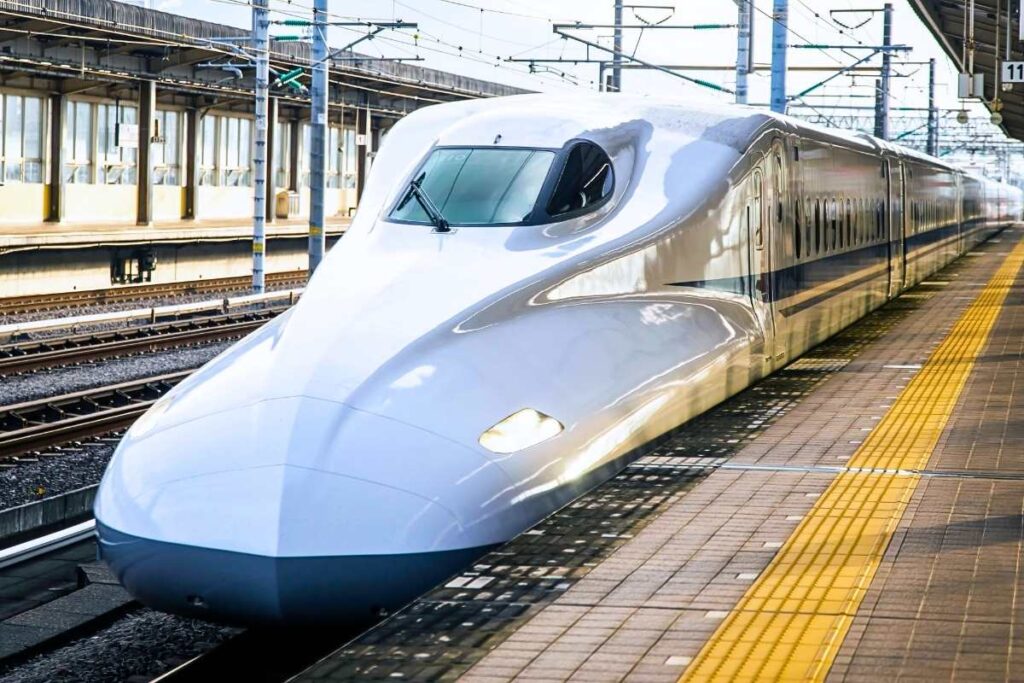
Japan’s high-speed Shinkansen trains connect major cities across the country—Tokyo, Kyoto, Osaka, Hiroshima, and beyond.
For travelers planning long-distance trips, the Shinkansen is the fastest, most comfortable, and often the most scenic way to explore Japan.
But because different sections of the network are operated by different JR companies, it’s natural to wonder:
Do I need separate tickets? Will I have to change trains?
Let’s break it down.
Which JR Companies Operate Which Shinkansen Lines?
- JR East – Tōhoku, Jōetsu, and Hokuriku Shinkansen (e.g., Tokyo to Sendai, Kanazawa)
- JR Central – Tōkaidō Shinkansen (Tokyo to Nagoya, Kyoto, Osaka)
- JR West – Sanyō Shinkansen (Osaka to Hiroshima, Hakata)
- JR Kyushu – Kyushu Shinkansen (Hakata to Kagoshima)
Each company controls its own section, but the trains and ticketing systems are designed to work together seamlessly.
Do I Need to Transfer Trains When Crossing JR Company Borders?
Not necessarily. Many long-distance trips—such as Tokyo to Kyoto, Tokyo to Hiroshima, or Osaka to Hakata—can be made without changing trains, even though the train crosses multiple JR companies.
These trains are through-services operated in cooperation, so there’s no need to get off or switch seats.
Do I Need Separate Tickets When Crossing JR Companies?
No, you don’t.
Even if your journey crosses multiple JR companies—like traveling from Tokyo to Hiroshima or Osaka to Sendai—you can usually purchase all the necessary tickets for your entire route in a single transaction at a major JR ticket office (Midori no Madoguchi).
Your tickets may be issued as multiple slips (such as a base fare ticket and separate seat reservations), but they are linked and valid across regions.
You don’t need to visit different ticket counters for each JR company or buy separate tickets for each leg.
Also, depending on your route, you may still need to transfer trains—even if all tickets are issued together.
For example:
- Tokyo to Kagoshima requires a transfer at Hakata (from JR West to JR Kyushu).
- Osaka to Sendai typically involves a transfer at Tokyo (from JR West to JR East).
Don’t worry—your seat reservations will clearly indicate any necessary transfers, and signage in major stations is multilingual and easy to follow.
What About Private Railways and Subways?
Japan’s rail network isn’t just JR. In fact, many cities have extensive private railway and subway systems that are not operated by JR companies.
If you’re only using a JR Pass, it’s important to know that the pass does not cover private railways or subways. For these, you’ll need to pay separately—either with an IC card like Suica or ICOCA, or by buying a ticket.
Private Railways You Might Encounter
Here are some well-known private railways that serve popular tourist destinations:
- Keisei Line – Connects Narita Airport with Ueno and Nippori (Skyliner, Access Express)
- Tokyo Metro & Toei Subway – City subways not covered by the JR Pass
- Keio Line – To Mount Takao
- Odakyu Line – To Hakone from Shinjuku
- Keihan Line – Between Kyoto and Osaka (Fushimi Inari, Gion, etc.)
- Hankyu Line – Great for reaching Arashiyama in Kyoto
- Kintetsu Line – Serves Nara, Ise, and Osaka
- Nankai Line – To Kansai Airport and Koyasan from Osaka
These lines are not operated by JR, so you’ll need to buy separate tickets or use an IC card like Suica or ICOCA.
City subways in Tokyo, Osaka, Kyoto, Nagoya, and elsewhere are often the easiest way to get around—but again, JR Passes do not cover them.
💡 Tip: If you’re planning to explore a specific city by subway, look into city passes or one-day unlimited ride tickets. They can be more cost-effective than paying per ride.
How to Handle Transfers
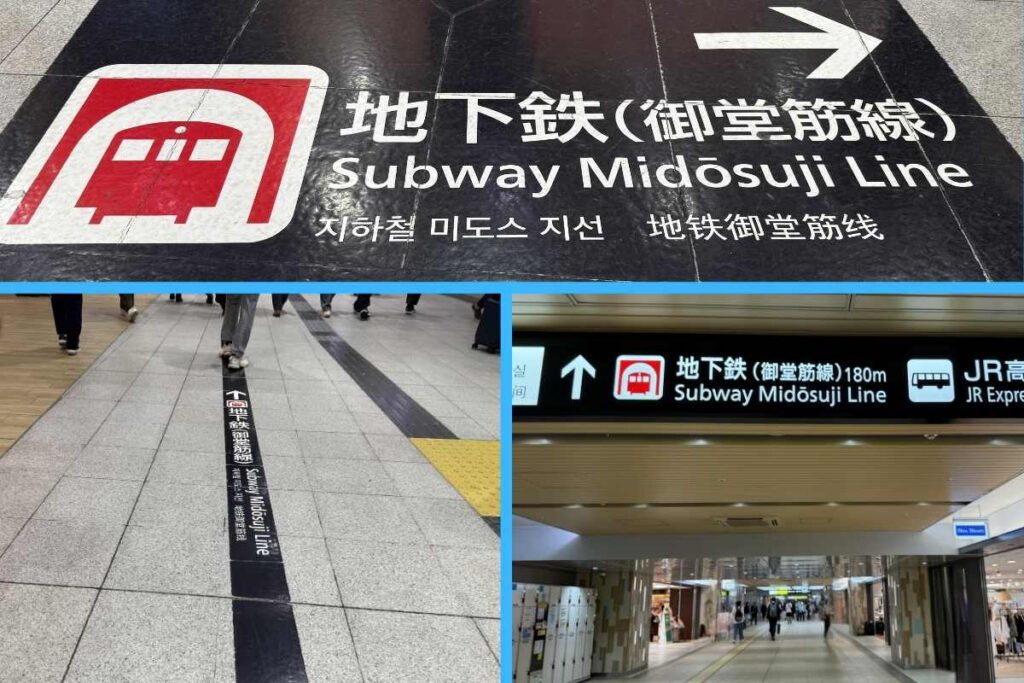
※Clear signs on the floor and ceiling guide you from the JR exit to the subway at Shin-Osaka Station.
When switching between JR and private railway lines, the stations are usually connected or located nearby, and signage is clear—even in English.
But if you’re traveling in a large city like Tokyo, Osaka, or Kyoto, there are often multiple transfer routes to reach the same destination.
Many travelers rely on Google Maps or transit apps, which are great for real-time directions.
However, we also recommend checking a regional rail map (available online or at stations), as it can help you discover simpler or more direct routes—especially for sightseeing spots.
Sometimes, the easiest way to get there isn’t what Google suggests!
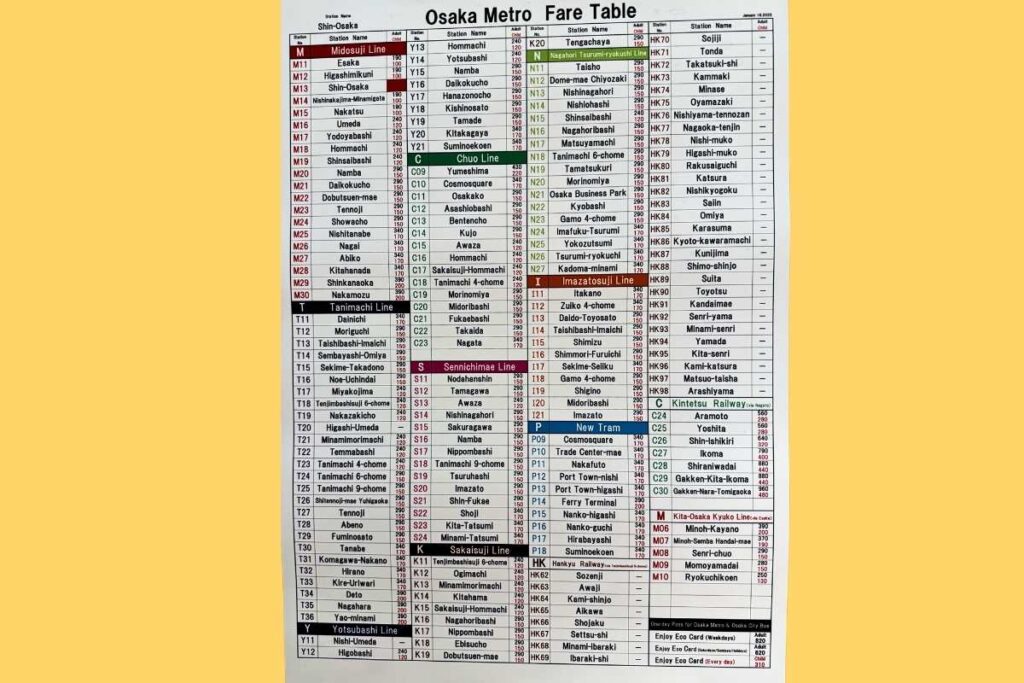
※This fare table at Shin-Osaka Station shows Osaka Metro stations with English names, line colors, and station numbers like “M13” for Shin-Osaka.
Tokyo Subway Route Map (PDF)
Osaka Area Rail Map (PDF)
🗺️ As you’ll see in the route map PDFs linked above, subway lines in both Tokyo and Osaka are color-coded, and each station has an assigned letter and number.
For example, Tokyo Station is labeled as “M17” on the red Marunouchi Line.
This visual system makes it easier to navigate—even if you’re not confident with Japanese station names.
📢 Onboard announcements and station signs also show the next station’s name and number, so you’ll know exactly when to get off.
Final Tips for Riding Trains Across Japan
Japan’s rail system may seem complex at first—but once you understand the basics, it becomes one of the easiest and most efficient ways to explore the country.
Here’s a quick recap:
- 🇯🇵 JR isn’t one company—it’s divided into regional operators like JR East, JR West, and JR Central.
- 🚄 You can travel across regions by Shinkansen, and in most cases, buy all tickets in one transaction—even if the route spans multiple JR companies.
- 🎟️ Not all train lines are JR—subways and private railways require separate payment, but IC cards like Suica and ICOCA make it simple.
- 🗺️ Route maps and station codes make it easy to navigate, even if you don’t speak Japanese.
- 💡 Use a mix of tools—Google Maps for real-time routing, and printed route maps to find the easiest and most direct transfers.
No matter where you’re headed—Kyoto’s temples, Hiroshima’s peace memorials, or Mount Fuji’s slopes—Japan’s trains will take you there with speed and reliability.
🚆 Still confused about IC cards or train passes?
Check out our guide:
👉 No IC Card? No Problem! Smart Ways to Ride Trains in Japan
